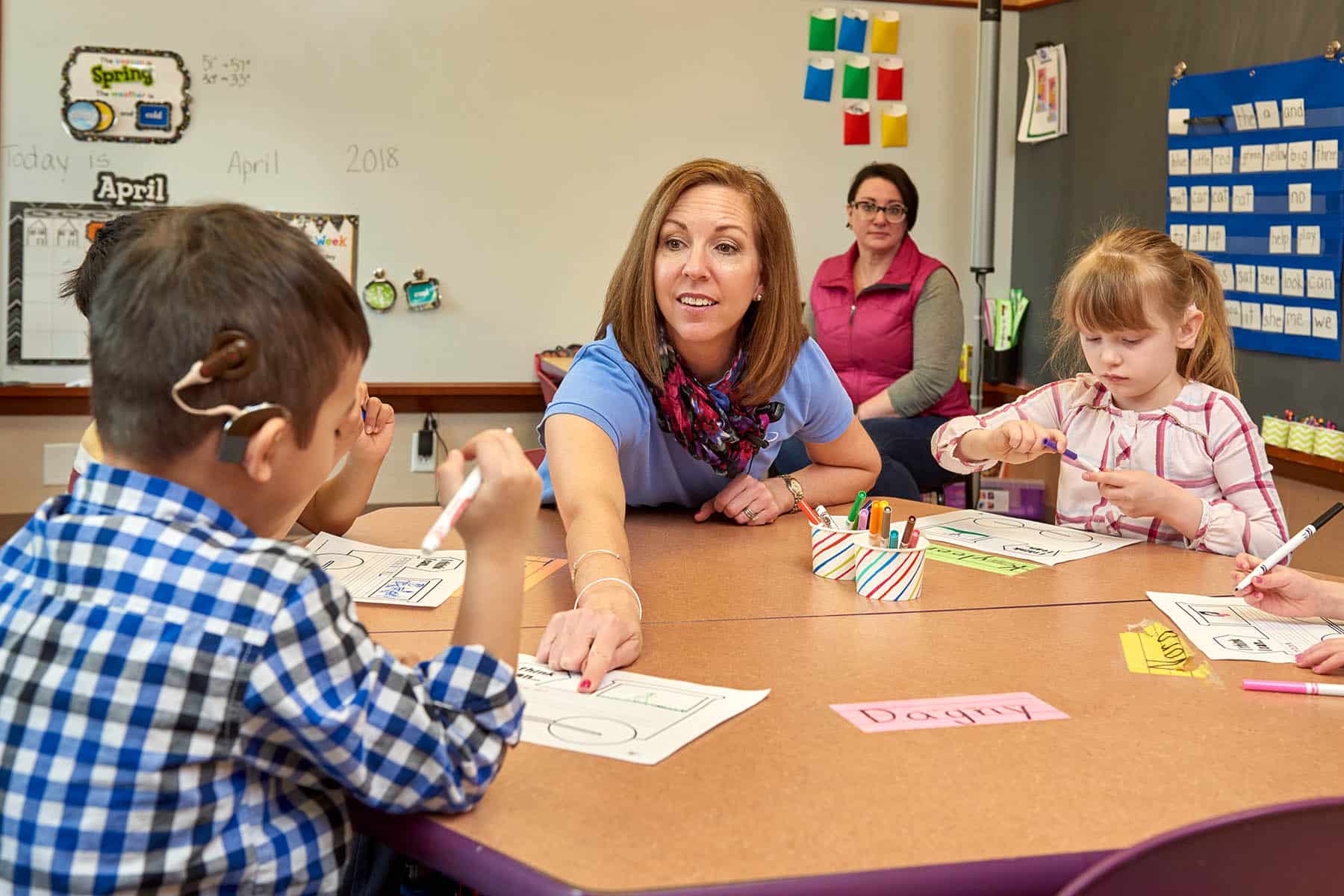Doug Lemov’s Teach Like a Champion is an excellent resource for teachers of the deaf. It is full of specific, concrete, high impact techniques to promote learning for ALL in the classroom. For students with hearing loss in a regular education classroom, their academic achievement is largely dependent on how well they are able access the rigorous, language-rich curriculum. Try these techniques (from Lemov) for promoting student engagement and supporting the success of students with hearing loss in your classroom.
- Technique 1: No Opt Out. Have the same high expectations for your students with hearing loss as you do for all students. Don’t accept, “I don’t know” but teach your students to be engaged, to take risks and “give it a shot.” If your students are unwilling or unable to answer a question, give them the opportunity to hear the correct answer, then ask them the question again. Everyone learns and supports each other in a high-performing classroom!
- Technique 2: Right is Right. Set high standards for correct student responses. Students with hearing loss need many opportunities to practice new skills and to use new vocabulary. To promote continued language growth and vocabulary development, expect complete and correct answers to questions and during class discussions. Require your students to use precise academic vocabulary to expand their comfort and command in using vocabulary they will need in college. Hold out for all-the-way right! Show your students that their answers truly matter and they are capable of getting it right.
- Technique 4: Format Matters. Champion teachers are preparing students for college and career success. According to Doug Lemov, it’s not just what students say that matters but how they communicate it. Expecting all students to use complete sentences and correct grammar in their oral and written responses will prepare them to succeed in many real-life situations from writing college essays to job interviews. Give students the opportunity to self-correct their errors. If students cannot successfully self-correct, the teacher should assist the students by acknowledging and correcting the error through modeling or starting the sentence and having the student complete the sentence with correct grammar. Students who are deaf and hard of hearing will benefit from the good language models in the classroom.
- Technique 8: Post It. Students who are deaf and hard of hearing benefit from consistent routines. They rely heavily on visual aids in the classroom to support their learning. You can provide both consistency and enhanced learning by posting your lesson objective in the same visible location every day so your students clearly know what they are expected to know or be able to do at the end of the lesson.
- Technique 13: Name the steps. Champion teachers help their students learn complex skills by breaking down tasks into manageable steps. When possible, give each step a name so that it can be readily recalled. Easily-remembered mnemonics help students recall the steps in order. Post the steps on a wall in your classroom as a supportive visual aid. This is particularly helpful for students with hearing loss who may struggle with the comprehension of long, complex directions and steps.
These are just a few of the helpful techniques covered in Lemov’s book that will help all students, including those with hearing loss, to succeed in the classroom.
Click here to read part 2 of the blog post which details more of Lemov’s techniques!
Lemov, Doug. (2010). Teach Like a Champion: 49 Techniques That Put Students on the Path to College. San Francisco, CA: Jossey-Bass.













